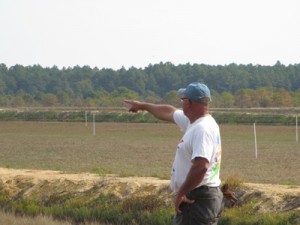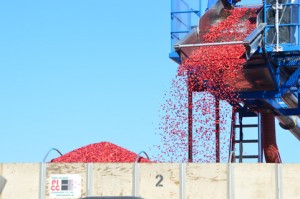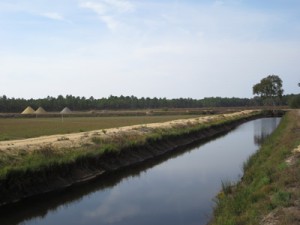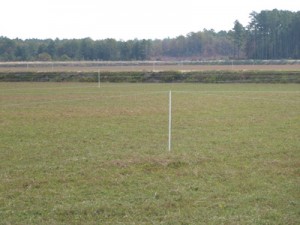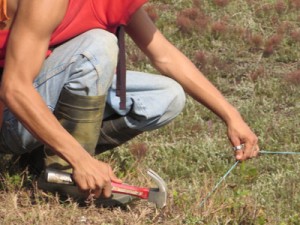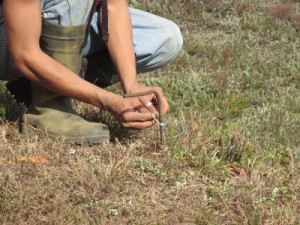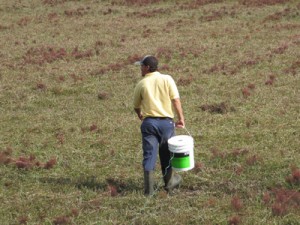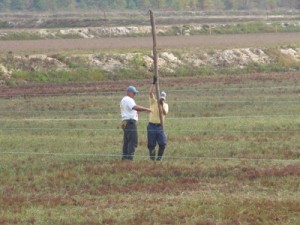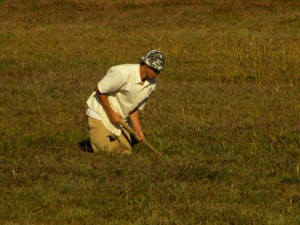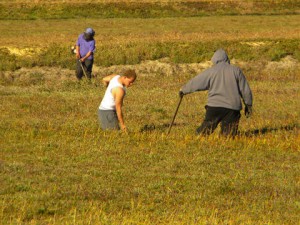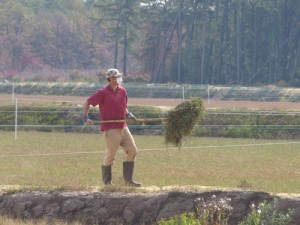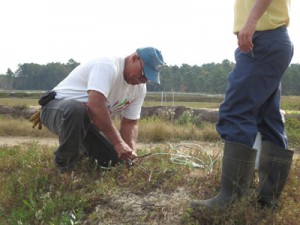It’s hard to believe, but this week we said goodbye to Jorge Morales , who is retiring after 43 years here at Pine Island Cranberry!
Jorge started with us as a seasonal team member in 1976, and moved to full time in November the following year. In that time, Jorge has done every job there was to do on this place. CEO Bill Haines tried putting that into numbers for the assembled team. “Jorge mowed a lot of dams for us. When you think of how we have over 100 miles of dams, and some years we mow them four times, he’s easily mowed thousands of miles of dams. He’s hauled dirt and gravel, sand for bogs, and cranberries to Chatsworth or to our own packing house, and that adds up to thousands of miles in 43 years. Between frost nights and heat watch, he’s unplugged hundreds, if not thousands of sprinklers. He’s helped put in hundreds of gates. And that doesn’t include building bogs or installing irrigation. In 1975, we put in our first ever irrigation system. So since 1977, Jorge has actually helped install irrigation for the entire farm; as we’ve rebuilt or refurbished, he’s helped with that too.”
But Bill saved the most amazing numbers for the end. “Jorge’s first harvest was in 1976 as a seasonal guy. Since that first crop in 1976, he’s helped us pick 8,792,648 barrels of cranberries. Now, that’s an important number to us in the industry, but not everyone knows what it means; it’s even more impressive when you find out that it means Jorge has helped harvest 879,264,800 pounds of cranberries over 43 years.”
“It’s impressive, the amount of work he’s helped us to do,” Bill said to the team this week at Jorge’s farewell lunch. “Along with his wife Mildred, he’s raised a family of four kids – and Mildred deserves a lot of credit for that – and through all of that, he’s been cheerful no matter what we ask him to do. No matter the weather, through the heat, the cold, heavy rain, or snow, he’s always positive, always cheerful, always raised the atmosphere and the morale of the whole team.”
“You can be proud of the fact that you were a part of this team for so many years,” Bill said to Jorge. “You’re part of the family that’s been here for so long; your father-in-law, your brothers, Mildred’s brothers. I’m proud of the fact that people like you work for Pine Island; what you’ve contributed we’ll never forget. You’ve made a difference, Jorge, and we all appreciate it.”
And what did Jorge, the man who is never, ever short of a word, say in his address to us all?
“Thank you, everybody.”
Thank you, Jorge! We’ll all miss you very much, and wish you nothing but the best. Come back and see us!


